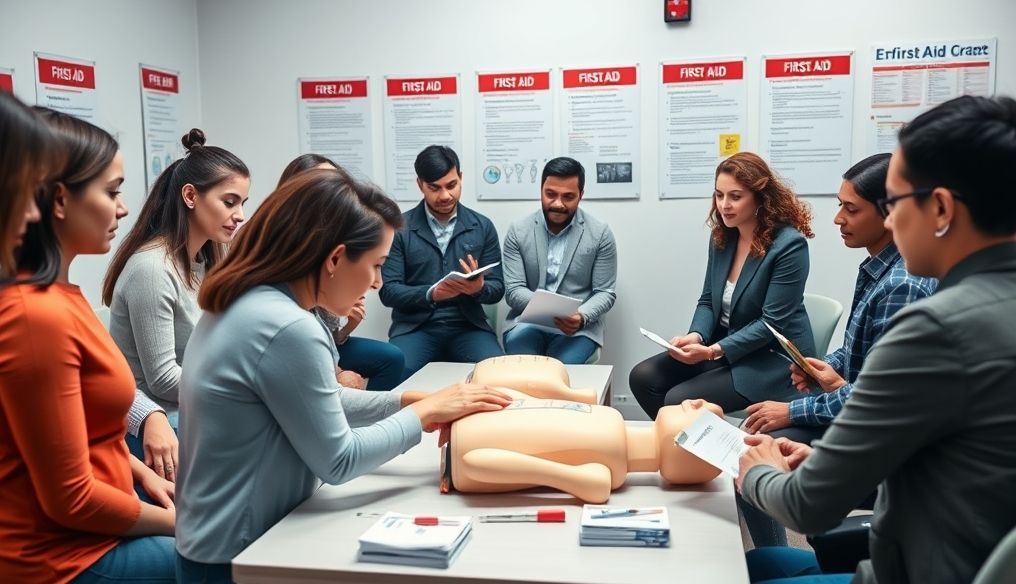What are the essential first aid skills everyone should know?
First aid is the immediate care given to an injured or ill person before professional medical help arrives. It aims to preserve life, prevent the condition from worsening, and relieve pain. Knowing basic first aid is invaluable and can significantly impact the outcomes of emergency situations.
Chapter 1: Initial Assessment of the Victim
The first step in any first aid situation is to assess the situation quickly and accurately. This includes:
1.1 Ensuring Safety
Before approaching the victim, make sure the area is safe for you and the victim. This means removing any potential hazards such as traffic, exposed electrical wires, or hazardous chemicals.
1.2 Checking Responsiveness
Try to talk to the victim to see if they are conscious. If they don't respond, gently shake them and ask loudly, "Are you okay?". If there is no response, they are unconscious.
1.3 Calling for Help
If the victim is unconscious or has a serious injury, call for emergency medical assistance immediately. In most countries, the emergency number is 911 or 112. Tell them your location, the nature of the incident, the number of victims, and their condition.
1.4 Checking Breathing and Circulation
If the victim is unconscious, check their breathing and circulation. Look for signs of breathing, such as the rise and fall of the chest. Place two fingers on the neck (carotid artery) to check for a pulse. If there is no breathing or pulse, start cardiopulmonary resuscitation (CPR) immediately.
Chapter 2: Cardiopulmonary Resuscitation (CPR)
CPR is an emergency procedure that combines chest compressions and rescue breaths to maintain blood flow and oxygen to the brain and vital organs when the heart stops or breathing ceases. Here's how to do it:
2.1 Identifying the Need for CPR
If the victim is unconscious and not breathing or breathing abnormally (such as gasping), they need CPR.
2.2 Chest Compressions
Place the victim on a flat, firm surface. Place the heel of one hand in the center of the victim's chest, between the nipples. Place your other hand on top of the first and interlock your fingers. Press down firmly and quickly on the chest to a depth of about 5-6 cm at a rate of 100-120 compressions per minute. Allow the chest to recoil fully between each compression.
2.3 Rescue Breaths
After every 30 chest compressions, give two rescue breaths. Tilt the victim's head back and lift their chin. Pinch the victim's nose closed with your fingers, then place your mouth tightly over the victim's mouth and give two slow, steady breaths, each breath lasting about one second. Look for chest rise as you give each breath.
2.4 Continuing CPR
Continue chest compressions and rescue breaths (30 compressions then 2 breaths) until medical help arrives or until the victim starts breathing normally.
Chapter 3: Handling Wounds and Bleeding
Controlling bleeding is a top priority in first aid. Here's how to handle wounds and bleeding:
3.1 Direct Pressure
Place a clean bandage or cloth directly on the wound and apply firm pressure. Continue applying pressure until the bleeding stops. If the bandage becomes soaked with blood, place another bandage on top of it without removing the first one.
3.2 Elevating the Injured Limb
If the wound is on the arm or leg, elevate the injured limb above the heart to help reduce bleeding.
3.3 Using a Pressure Bandage
If the bleeding continues despite direct pressure and elevation, use a pressure bandage. Wrap the bandage tightly around the wound, making sure it is not so tight that it cuts off circulation.
3.4 Seeking Medical Assistance
If the bleeding is severe or does not stop, seek medical assistance immediately.
Chapter 4: Handling Burns
Burns vary in severity, and each degree of burn requires different care. Here's how to handle burns:
4.1 Cooling the Burn
Place the burn under cool running water for 10-20 minutes. Do not use ice directly on the burn, as it may cause further tissue damage.
4.2 Covering the Burn
Cover the burn with a sterile, dry bandage. Do not apply ointments or creams to the burn, as they may trap heat and increase the risk of infection.
4.3 Seeking Medical Assistance
Seek medical assistance for severe burns (covering a large area of the body or involving the face, hands, or genitals) or for burns that show signs of infection (such as redness, swelling, or pus).
Chapter 5: Handling Fractures and Sprains
Fractures and sprains are common injuries that require special care. Here's how to handle them:
5.1 Immobilizing the Injury
Immobilize the injured limb using a splint or bandage. If you don't have a splint or bandage, you can use anything rigid and straight, such as a piece of wood or a rolled-up magazine.
5.2 Applying Ice
Apply ice to the injured area for 20 minutes at a time, several times a day. Ice helps reduce swelling and pain.
5.3 Elevating the Injured Limb
Elevate the injured limb above the heart to help reduce swelling.
5.4 Seeking Medical Assistance
Seek medical assistance for severe fractures and sprains.
Chapter 6: Handling Choking
Choking is an emergency that requires immediate intervention. Here's how to handle choking:
6.1 Encouraging the Victim to Cough
If the victim is able to cough, encourage them to cough forcefully. Coughing is often enough to dislodge the foreign object.
6.2 Performing the Heimlich Maneuver
If the victim is unable to cough, speak, or breathe, perform the Heimlich maneuver. Stand behind the victim and wrap your arms around their waist. Make a fist with one hand and place it just above the victim's navel, grasping your fist with your other hand. Thrust quickly and forcefully inward and upward. Repeat this motion until the foreign object is dislodged or the victim becomes unconscious.
6.3 If the Victim is Unconscious
If the victim becomes unconscious, lay them on the ground and start CPR.
Chapter 7: Handling Allergic Reactions
Allergic reactions can range from mild to life-threatening. Here's how to handle allergic reactions:
7.1 Identifying the Allergen
Try to identify the allergen and remove it from the victim's surroundings.
7.2 Using an Epinephrine Injection (EpiPen)
If the victim has a known allergy and carries an epinephrine injection, help them use it. Follow the instructions on the injection.
7.3 Seeking Medical Assistance
Seek medical assistance for severe allergic reactions, even after using an epinephrine injection.
Chapter 8: Additional First Aid Tips
- Keep a well-stocked first aid kit in your home and car.
- Learn how to use the items in your first aid kit.
- Take a first aid and CPR training course.
- Stay calm in emergency situations.
- Call the emergency number for professional medical assistance.
Disclaimer: This information is provided for informational purposes only and should not be considered a substitute for professional medical advice. In case of a medical emergency, seek immediate medical attention.




